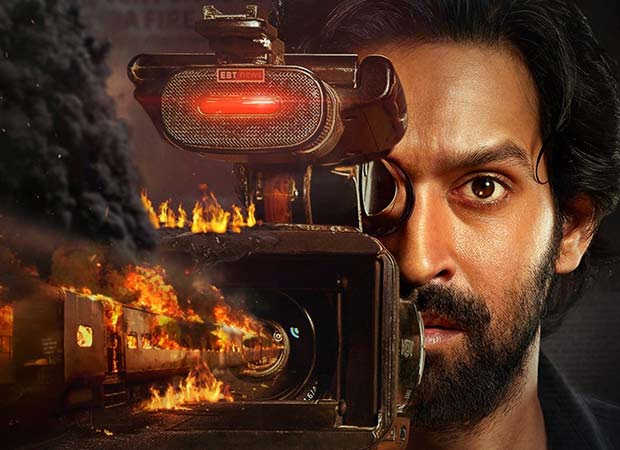Somewhere in the rolling, frost-covered hills of England, Ukrainian fighting resolve is being given a steel tip.
Volunteers from Ukraine are being flown in from Poland, on about 130 flights every six months on average. There are florists, grocers, butchers, single mothers and teachers — ordinary people with one thing in common: they want to fight the Russian invasion of Ukraine.There are some, though, with previous military experience.
Operation Interflex, described by UK defence officials as the largest per capita trainer of Ukrainians, has since June 2022 trained more than 32,000 men and women to fight Russian military forces and has issued more than 3.5 million items of war equipment. Eleven nations, plus Britain, are imparting training.
“We’re training them to be more lethal than their Russian counterparts, and more survivable,” said Col James Thurston, commander, Operation Interflex. “We’re training them to regain territory, not just hold it,” he told international journalists visiting at Britain’s invitation.
Brothers In Arms
Two pairs of pale blue eyes enter a room filled with journalists. You can tell the two young men in battle camouflage are grinning under their snoods. They’re camouflaged head to foot. The patterns differ from those of their British and Australian instructors just so you know who’s who on the live-fire training ground.
They’re brothers. “Jimmy and Jack,” they offer by way of introduction. There’s scepticism all round. Someone proposes “Ilya” and “Kuryakin”, the given and surname of a fictional spy. Jimmy and Jack start laughing. They’ve seen “The Man from U.N.C.L.E.” To protect their identities we settle on “Igor” and “Vlad” as noms de guerre.
The brothers have battle experience, in forest environments. Igor says through an interpreter that he’s seen action on the third line of defence on the eastern front, while Vlad fought near Luhansk, eastern Ukraine, as well as near Lysychansk.
“We’ve learned a lot about trenches and urban fighting,” said Vlad. “Most of our training has been in assault teams attacking trenches.”
Then there’s “Did”, Ukrainian for Grandpa; the younger soldiers call him that because he’s 40 and has two college degrees — one in railway engineering and the other in social psychology. He’s from a city on the UkraineRussia border. When the Russian troops crossed into his village, he was in the garden with his family. “It was winter, there were no supplies,” Did says. “I studied Russian,” he says, “but I didn’t invite them to invade.”
‘Survivability, Lethality, Offensive Spirit’
The frost crunches underfoot. It’s about -6° Celsius atop a hill. Short, sharp bursts of automatic fire crack the frozen air. The Ukrainians are practising flushing out the enemy in the field, moving in pairs — stopping, dropping to a knee, shooting, popping smoke for cover, moving again.
They’re used to combat in -15°C and lower, they say later. Ahead, helmets bob up and down in the trenches as they try to clear them of the “enemy” without getting themselves, or the men beside them, killed.From some distance away to the left comes the flat report of a rifle being fired. A target drops and pops back up on the 100-metre range. The volunteers are learning about accuracy under pressure so that the person they shoot at for real back home cannot return the compliment. The training distances range from 25 to 250 metres.
“Its about survivability, lethality and offensive spirit,” an instructor says. They also learn how to tackle armed drones, and about the laws of armed conflict.
A Long War
The second winter of war threatens to stretch into spring, and beyond. About 50% of territory captured by Russia has been regained, according to UK defence sources, who add that Russia has lost over 2,600 tanks, 5,000 armoured vehicles and nearly 1,400 artillery pieces.
There was a setback in February with the Russians taking Avdiivka, a Ukrainian stronghold in the east. And Ukrainian president Volodymyr Zelensky has for the first time counted the dead on his side: 31,000 killed in two years. Pentagon estimates put the Russian death toll at 60,000 killed and about 240,000 wounded.
Fresh onslaughts by Moscow are finding the Ukrainians outmanned and outgunned. But they fight on, spurred by some stunning successes in 2023 and the knowledge that if Putin succeeds, it will lead to more misadventurism. But with Sweden cleared to enter Nato as its 32nd member, the Russian president might find himself facing a more determined Nato.
“We’re clear that Russia can end this war. However, there is no sign that President Putin is giving up… despite the high costs to his own side,” said Nick Catsaras, UK Cabinet Office director-general for Russia Ukraine. The allies, especially Britain, are committed to supporting Ukraine as long as it takes. “Putin thinks he can outlast Western support in this conflict. He is wrong,” said Luke Dearden, Ukrainian Camp Unit deputy director, FCDO.
Most courses are five weeks. On Day 35 the Ukrainians leave Britain. This unit, too, will head out to wage a war they didn’t want. At night there will be singing, dancing, and drinking. And goodbyes. There will be time for more sombre reflection on life and death on the flight that returns them to a frozen hellscape bearing hope and war.
Volunteers from Ukraine are being flown in from Poland, on about 130 flights every six months on average. There are florists, grocers, butchers, single mothers and teachers — ordinary people with one thing in common: they want to fight the Russian invasion of Ukraine.There are some, though, with previous military experience.
Operation Interflex, described by UK defence officials as the largest per capita trainer of Ukrainians, has since June 2022 trained more than 32,000 men and women to fight Russian military forces and has issued more than 3.5 million items of war equipment. Eleven nations, plus Britain, are imparting training.
“We’re training them to be more lethal than their Russian counterparts, and more survivable,” said Col James Thurston, commander, Operation Interflex. “We’re training them to regain territory, not just hold it,” he told international journalists visiting at Britain’s invitation.
Brothers In Arms
Two pairs of pale blue eyes enter a room filled with journalists. You can tell the two young men in battle camouflage are grinning under their snoods. They’re camouflaged head to foot. The patterns differ from those of their British and Australian instructors just so you know who’s who on the live-fire training ground.
They’re brothers. “Jimmy and Jack,” they offer by way of introduction. There’s scepticism all round. Someone proposes “Ilya” and “Kuryakin”, the given and surname of a fictional spy. Jimmy and Jack start laughing. They’ve seen “The Man from U.N.C.L.E.” To protect their identities we settle on “Igor” and “Vlad” as noms de guerre.
The brothers have battle experience, in forest environments. Igor says through an interpreter that he’s seen action on the third line of defence on the eastern front, while Vlad fought near Luhansk, eastern Ukraine, as well as near Lysychansk.
“We’ve learned a lot about trenches and urban fighting,” said Vlad. “Most of our training has been in assault teams attacking trenches.”
Then there’s “Did”, Ukrainian for Grandpa; the younger soldiers call him that because he’s 40 and has two college degrees — one in railway engineering and the other in social psychology. He’s from a city on the UkraineRussia border. When the Russian troops crossed into his village, he was in the garden with his family. “It was winter, there were no supplies,” Did says. “I studied Russian,” he says, “but I didn’t invite them to invade.”
‘Survivability, Lethality, Offensive Spirit’
The frost crunches underfoot. It’s about -6° Celsius atop a hill. Short, sharp bursts of automatic fire crack the frozen air. The Ukrainians are practising flushing out the enemy in the field, moving in pairs — stopping, dropping to a knee, shooting, popping smoke for cover, moving again.
They’re used to combat in -15°C and lower, they say later. Ahead, helmets bob up and down in the trenches as they try to clear them of the “enemy” without getting themselves, or the men beside them, killed.From some distance away to the left comes the flat report of a rifle being fired. A target drops and pops back up on the 100-metre range. The volunteers are learning about accuracy under pressure so that the person they shoot at for real back home cannot return the compliment. The training distances range from 25 to 250 metres.
“Its about survivability, lethality and offensive spirit,” an instructor says. They also learn how to tackle armed drones, and about the laws of armed conflict.
A Long War
The second winter of war threatens to stretch into spring, and beyond. About 50% of territory captured by Russia has been regained, according to UK defence sources, who add that Russia has lost over 2,600 tanks, 5,000 armoured vehicles and nearly 1,400 artillery pieces.
There was a setback in February with the Russians taking Avdiivka, a Ukrainian stronghold in the east. And Ukrainian president Volodymyr Zelensky has for the first time counted the dead on his side: 31,000 killed in two years. Pentagon estimates put the Russian death toll at 60,000 killed and about 240,000 wounded.
Fresh onslaughts by Moscow are finding the Ukrainians outmanned and outgunned. But they fight on, spurred by some stunning successes in 2023 and the knowledge that if Putin succeeds, it will lead to more misadventurism. But with Sweden cleared to enter Nato as its 32nd member, the Russian president might find himself facing a more determined Nato.
“We’re clear that Russia can end this war. However, there is no sign that President Putin is giving up… despite the high costs to his own side,” said Nick Catsaras, UK Cabinet Office director-general for Russia Ukraine. The allies, especially Britain, are committed to supporting Ukraine as long as it takes. “Putin thinks he can outlast Western support in this conflict. He is wrong,” said Luke Dearden, Ukrainian Camp Unit deputy director, FCDO.
Most courses are five weeks. On Day 35 the Ukrainians leave Britain. This unit, too, will head out to wage a war they didn’t want. At night there will be singing, dancing, and drinking. And goodbyes. There will be time for more sombre reflection on life and death on the flight that returns them to a frozen hellscape bearing hope and war.






